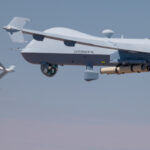
Despite a brighter outlook for defense spending in the U.S. and in Europe, western companies in the aerospace and defense (A&D) industry need to be more aggressive in developing new technologies in the face of emerging competition from commercial entrants and from rival countries racing to make advances in artificial intelligence and advanced weapon systems, says a new report by the audit and consulting firm PwC.The report points to relatively low organic investments by A&D companies in research and development…

 By
By 











